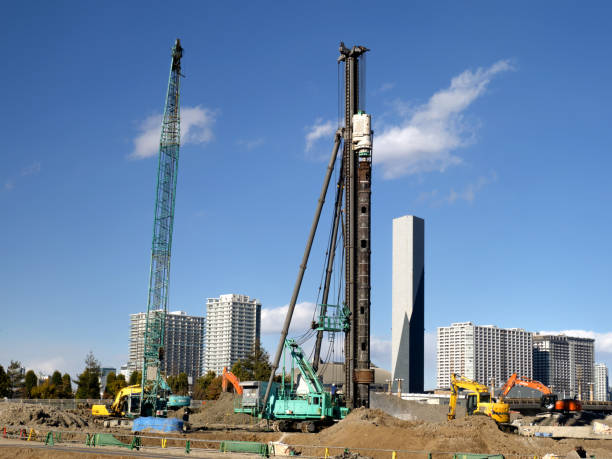When it comes to building on challenging construction sites such as those with weak soil, high water tables, steep slopes, or seismic activity, standard foundation methods do not work. Fortunately, various smart, engineered foundation solutions are available that can provide your building long-term stability, reduce risks, and meet modern safety standards.
With so many options available, it can be daunting to choose the right foundation method for your project. Each site has its own soil conditions, load requirements, and environmental factors that need to be considered. Making the wrong decision can lead to structural damage and even legal consequences.
In this article, we explore the smartest foundation solutions tailored for difficult terrains to help you make the right choice.
Continuous Flight Auger Piling
Continuous flight auger piling is a smart method used on sites with weak or loose soils. In this process, a hollow stem auger drills into the ground while concrete is pumped through it as the auger is withdrawn. This creates a strong pile without leaving an open hole, which helps avoid soil collapse. Steel reinforcements are added for extra support.
This method is quiet and produces low vibrations, making it ideal for built-up areas. It works well in waterlogged or soft ground conditions and helps form a stable base for heavy structures.
Driven Piling
Another simple and effective foundation method for complex sites is driven piling, where pre-made steel, timber, or concrete piles are hammered into the ground using a pile driver. The piles are driven to a depth where they can carry the load of the structure securely. This method is suitable for most soil types and is quick to install.
Driven piles offer high strength and are easy to test after installation. They are often used in bridges, industrial buildings, and areas where speed and strength are important.
Bored Piling
It involves drilling a hole into the ground and filling it with concrete to form a pile. Reinforcement bars are also placed inside the hole before pouring the concrete. This method is ideal for large buildings or areas where noise and vibration must be controlled.
These piles can be made in various sizes and depths, depending on the needs of the project. It is a good choice for deep foundations where strong support is needed in soft soil.
Mini Piling
Mini piling is used in places where space is tight or access is limited. They can carry heavy loads despite their smaller size, making them ideal for building extensions, basement works, or inside existing buildings. It is quick to install, causes little disturbance, and can be used in different ground conditions.
Raft Foundation
They spread the load of the building across a large area, often the entire footprint of the structure. A thick concrete slab is poured over the ground, sometimes with beams built in for added strength. This method works well in areas with soft or loose soil where other deep foundations may not be suitable. It reduces the risk of uneven settling and is used for homes, schools, and other low-rise buildings.
Pad Foundation
Unlike other piling methods, pad foundations support individual points of load, such as columns. A concrete block is placed under each column, and its size depends on the weight it needs to support. This method is easy to build and cost-effective for small to medium-sized buildings. It works well when the soil has good load-bearing strength. Therefore, they are often used in warehouses, houses, and small commercial buildings.
Screw Piling
This method involves the use of steel shafts with helical blades that are twisted into the ground, like screws. They are quick to install and cause minimal disturbance to the soil. The best thing is that these piles can carry both compression and tension loads, which is why they are often used in weak soils or near water. It is ideal for temporary or permanent structures and works well in areas where fast installation is needed.
Grout Injection Piling
These piles are used to strengthen the ground by injecting grout into the soil at high pressure. The grout forms solid columns that support the structure above. It is useful in loose or sandy soils where traditional piles may not work well. It is also helpful for stabilising old buildings or correcting settlement problems.
Restricted Access Piling
As indicated by the name, restricted access piling is used when the site is hard to reach or has very little working space. It requires special machines that are smaller and lighter to install the piles without causing damage to the surroundings. This method is helpful in city centres, inside buildings, or near existing structures.
Key Takeaway
From continuous flight auger piling to restricted access piling, all aforementioned methods are highly effective and can make even the most difficult sites safe and stable. So, you can choose any one of them depending on the ground conditions and your project needs.








